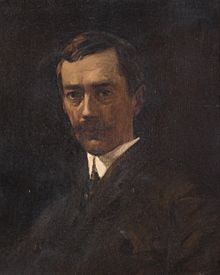Leonard Doncaster facts for kids
Quick facts for kids
Leonard Doncaster
|
|
|---|---|

Doncaster in 1920
|
|
| Born | 31 December 1877 Sheffield, England
|
| Died | 28 May 1920 (aged 42) |
| Alma mater | University of Cambridge |
| Known for | Discovery of sex linkage |
| Awards | Elected as Fellow of the Royal Society of London, 1915 |
| Scientific career | |
| Fields | Genetics, lepidopterology, animal breeding |
| Institutions | King's College, Birmingham University, University of Liverpool |
| Influences | William Bateson |
Leonard Doncaster (born December 31, 1877 – died May 28, 1920) was a smart English scientist. He studied genetics, which is about how traits are passed down from parents to children. He also taught about zoology, the study of animals, at universities like Birmingham and Liverpool. Most of his amazing research focused on insects!
Contents
Early Life
Leonard was born on December 31, 1877, in a place called Abbeydale, Sheffield, England.
His Journey in Science
Leonard went to Leighton Park School and then studied at King's College, Cambridge starting in 1896. He was very good at science, becoming a "Scholar of natural sciences" in 1898. He even won the Walsingham Medal in 1902 for his excellent work.
In 1902, he started working at the Cambridge University Museum of Zoology. Later, from 1906 to 1910, he taught zoology at Birmingham University.
Discovering Sex Linkage
Leonard Doncaster was one of the first scientists to follow the ideas of Gregor Mendel, who discovered how traits are inherited. Leonard made a big discovery himself: sex linkage. This means that some traits are passed down differently depending on whether an animal is male or female.
He found this out while studying the magpie moth, called Abraxas grossulariata. He wrote several books about genetics, including "Heredity in the Light of Recent Research" (1910). In this book, he clearly said that the idea of Lamarckism was wrong. Lamarckism was an older idea that animals could pass on traits they gained during their lifetime, like a strong arm from exercise.
Return to Cambridge and Recognition
In 1909, Leonard went back to Cambridge University. He became the Superintendent of the Museum of Zoology, overseeing its collections, until 1914. In 1914, he became a University Lecturer in Zoology.
His hard work was recognized when he won the Trail Medal from the Linnean Society in 1915. That same year, he was also chosen to be a Fellow of the Royal Society of London, which is a very high honor for scientists in the UK.
World War I Service
During the First World War, Leonard helped out as a bacteriologist (someone who studies tiny germs) at a hospital in Cambridge. Because he was a Quaker, a member of a religious group that believes in peace, he later joined the Friends' Ambulance Unit in Dunkirk, helping people during the war.
Later Life
After the war, Leonard became a Professor of Zoology at Liverpool University in 1919. Sadly, he passed away in 1920 at the age of 42 from a type of cancer called sarcoma. Another famous scientist, William Bateson, wrote about Leonard's life and work after he died.
See also

